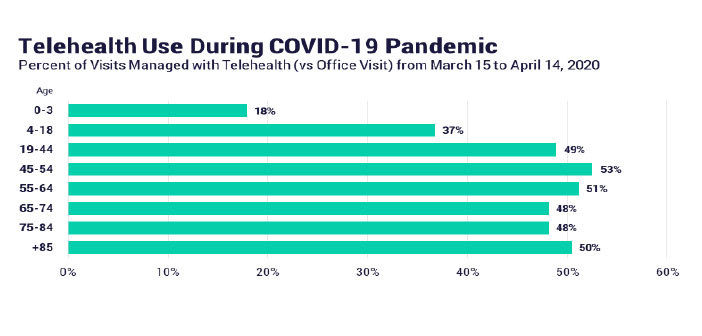Telehealth is Here to Stay
“Going to the doctor” used to mean a trip to the doctor’s office where you were weighed and measured, vitals were taken, blood draws were done, a nurse asked lots of questions, and the doctor physically examined you to determine what treatment would be recommended for your illness or injury. Telehealth was offered by many insurance companies, but not used much. Then COVID-19 happened. Telehealth visits accounted for approximately 50% of all doctor visits in the study below. That is a whopping 300% increase in the use of telehealth.
We have learned a lot about how to use telehealth services. One of Nebraska’s leading health insurance companies identified these advantages. It has improved access to care because a doctor is available 24/7 and you only need a phone to connect with them. No additional forms to fill out or crowded waiting rooms. Patients have evaluated the services as highly satisfied and feel more engaged in the process. Fewer hospital admissions and lower overall health care expenses.
Telehealth cannot be used to treat all medical conditions. It has been particularly effective for primary care, monitoring some chronic conditions, dermatology, behavioral health, and radiology. An example of a chronic condition would be providing virtual care for diabetes. The patient can upload daily information for food logs, medications, and blood sugar levels. An app can help estimate insulin needs. The information is reviewed by medical personnel and the patient is contacted when results exceed normal parameters. Additional support is provided by an online portal to see test results, schedule an appointment, order prescription refills, or email the doctor. There is even a mobile retinal screening app. Telehealth will not replace live interaction between a doctor and a patient. The medical community has many concerns about assuring quality of care and the ongoing continuity of care. These challenges will evolve. However, it is clear that telehealth will grow as a method of delivering health care.



